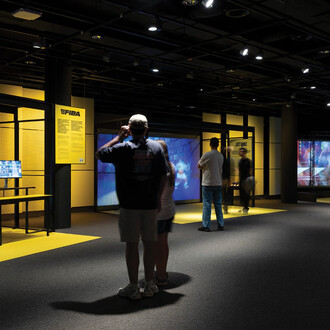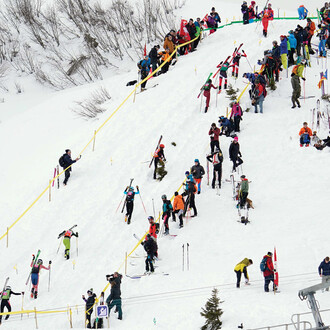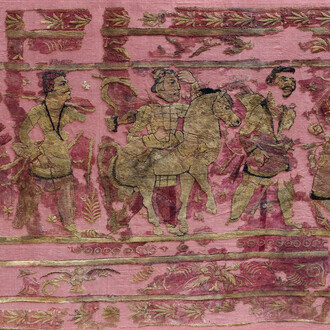The second call for applications for the Photographic survey of the canton of vaud was launched in 2023, following a similar exercise held in 2021. Photographers living or working in Vaud were invited to put together a proposal based on a subject selected from the cantonal inventory of intangible heritage – a list of some 75 traditions and customs that are distinctive to the region’s culture and history.
Following a competitive selection process, six photographers – Thomas Brasey, Olga Cafiero, Sarah Carp, Matthieu Gafsou, Yves Leresche and Romain Mader – were chosen by a panel of experts to bring their projects to life. Each received a grant and was given one year to conduct research and produce a series documenting a local practice or tradition.
Digital copies of the photographs are held at the Iconopôle at the Cantonal and University Library in Lausanne, while the physical photographs are now part of the Photo Elysée collection.
Modern-day photographers are by no means the first to document an area or region through the lens – the practice is as old as photography itself. From the outset, photographers were indeed considered to be in a unique position to record an environment, capture social and economic changes and preserve these important records for future generations.
It is therefore no surprise that those who have taken on this dual role – as witness and archivist – include some of the biggest names in photography. In 1851, Gustave Le Gray, Édouard Baldus and Hippolyte Bayard were among a group of pioneers who photographed landmarks and monuments around France as part of the Missions Héliographiques, a project commissioned by the French Inspector General of Historical Monuments. Some 130 years later, great names including Robert Doisneau, Gabriele Basilico, Josef Koudelka and Sophie Ristelhueber were hired to carry out similar duties by DATAR, France’s land management and regional planning agency. In the intervening period, these wide-ranging documentary campaigns took on a more social dimension – a shift in focus driven in part by photographers such as Walker Evans, Dorothea Lange, and Gordon Parks, who worked for the U.S. Farm Security Administration during the Great Depression.
In Switzerland, documentary photography is a more recent but no less thriving practice: the Canton of Vaud was the sixth Swiss region to embark on an exercise of this kind, following in the footsteps of the Cantons of Fribourg, Geneva, Valais, and Neuchâtel, as well as the Bernese Jura region. The campaign involved some of the leading lights of the national contemporary photography scene.
Yet unlike their 19th-century French counterparts, the six photographers who took part in the Photographic Survey of the Canton of Vaud were not tasked with documenting monuments and landmarks. Theirs was an altogether different and more daunting challenge: to capture the Canton’s intangible heritage, something that is by nature elusive.
The photographers worked on their subject of choice, selected from a list drawn up by the Canton of Vaud. Afforded total creative freedom, they embraced the complexities that come with documenting the intangible. The result is an exhibition that provides a glimpse into the people and places of Vaud through uniquely personal and subjective lenses. Follow Olga Cafiero as she peruses old copies of the Messager boiteux, and join Matthieu Gafsou as he takes part in the Jeunesses campagnardes. Go in search of the Brigands du jorat with Thomas Brasey, and savor the art of mechanics with Sarah Carp. Meet the Helvetia Circus with Yves Leresche, and dig into a papet vaudois with Romain Mader. These worlds – each separate yet all connected – reflect the richness and diversity of the Canton of Vaud. Sometimes, we just need to look at things through a different lens.
















